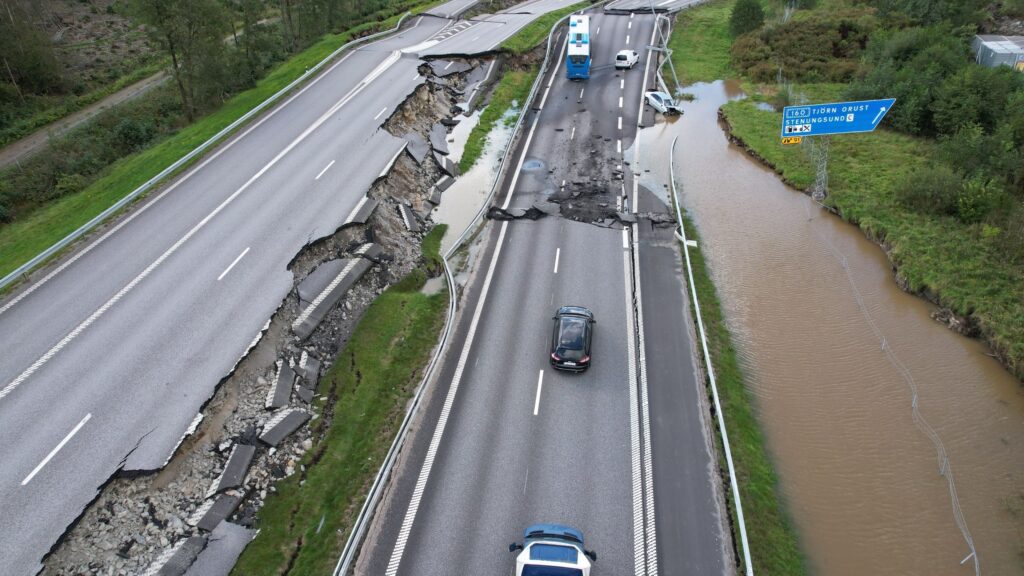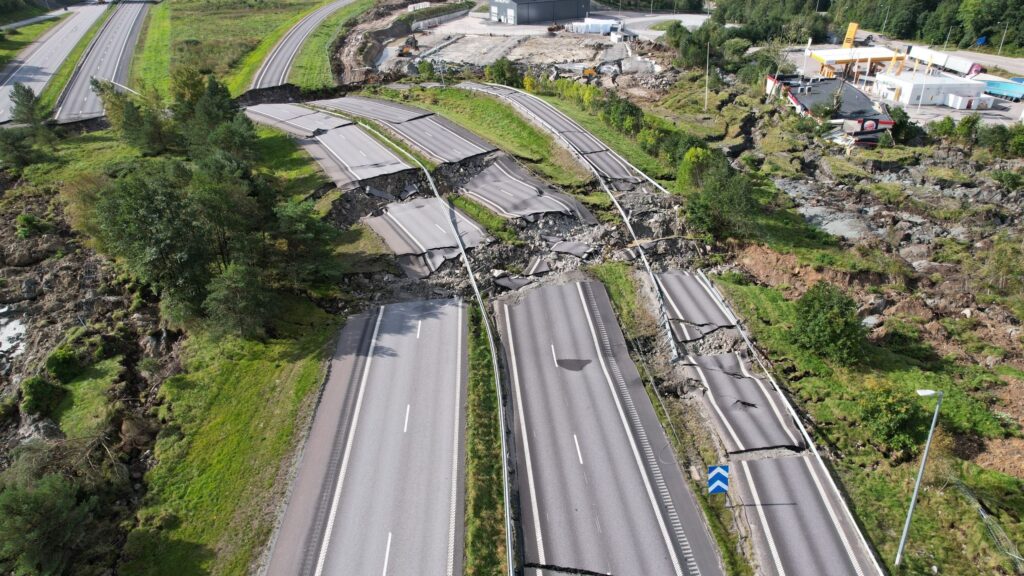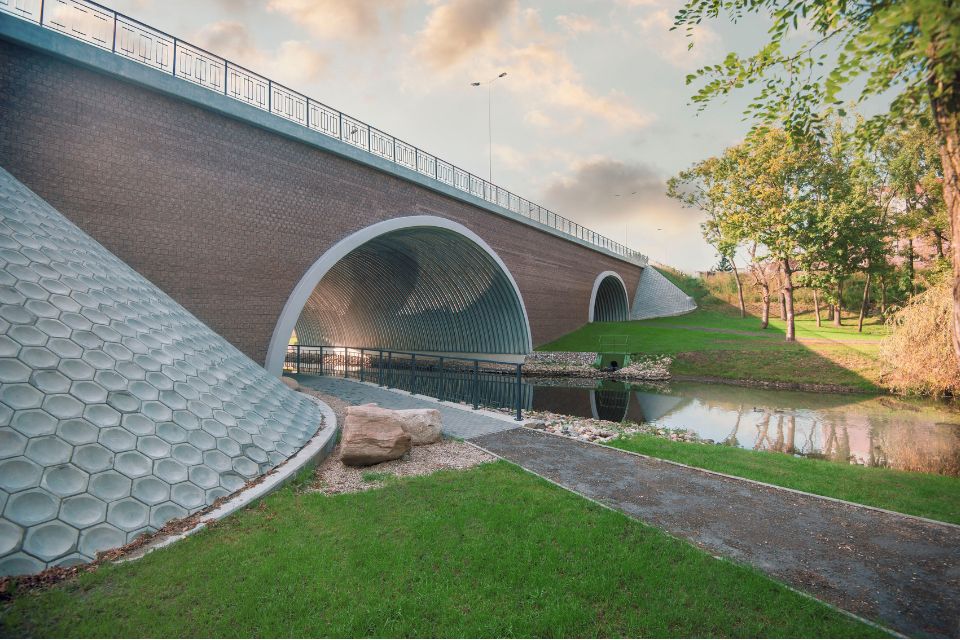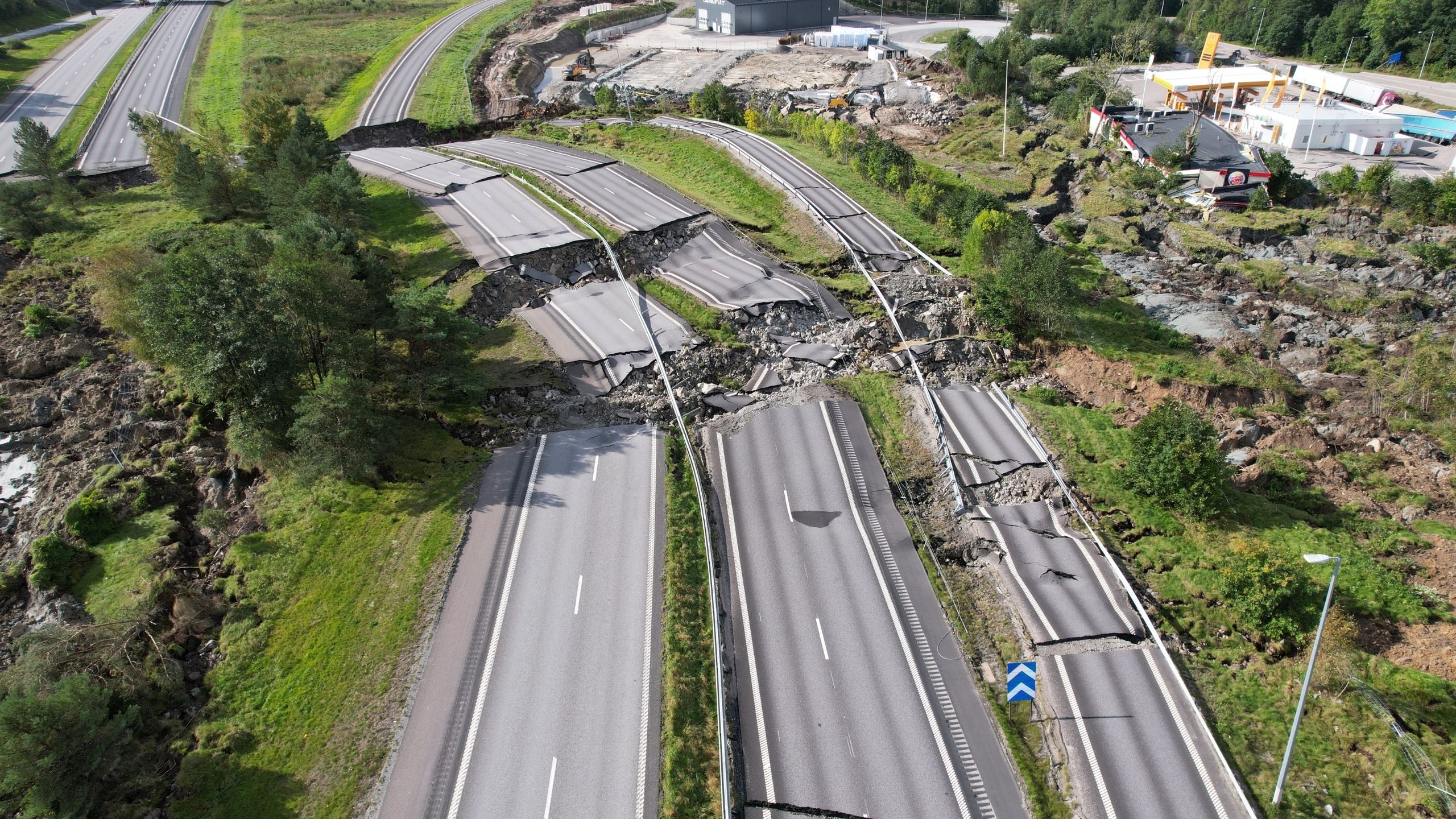Late on the night of September 23, 2023, a landslide occurred in western Sweden, destroying a large section of the major E6 motorway near Stenungsund, Sweden. Luckily, despite extensive damage, no one was killed or injured. Immediately extensive traffic disruptions hit the region, which creates delays for commuters and interrupts freight transport, disrupts local traffic on back roads and causes wear and tear to less-trafficked roadways, and will create more negative ripple effects in the economy in the longer term.
The landslide effectively closes down the primary roadway between Oslo, Norway and Gothenburg, Sweden for the foreseeable future, meaning that the economic aftershocks of this disaster will be felt for months to come. And this is a relatively lucky escape, as many landslides throughout the world are not only much more catastrophic but may also leave the land more vulnerable to future landslides.
These kinds of events, once rare, are becoming common. The Sweden landslide is just one among an increasing number of catastrophic events happening due to the negative and accelerating effects of climate change.
What defines landslide risk?
A landslide can happen for many reasons, but it is becoming more common due to climate-change-driven increases in rainfall as well as soil erosion. The effects are exacerbated further when the type of soil is already unsuitable for construction. In western Sweden, the area in which the landslide occurred is known to contain a large amount of quick clay.
Quick clay is highly unstable in the best of circumstances. And when subjected to stress, such as unusually high levels of rainfall, quick clay liquefies and leads to conditions that increase the landslide risk conditions considerably.
The perils of ignoring erosion and landslide risk assessments
Even before construction took place in the Stenungsund region, authorities highlighted high potential for flooding, erosion and landslide risk. But construction took place anyway. While originally classified as a case of gross devastation that caused danger to the public, the new criminal classification is as a suspected environmental crime, which is a rapidly growing criminal category covering everything from the illegal wildlife trade to waste and pollution. It is likely many more such charges will be filed when and if public infrastructure fails due to foreseeable risks exacerbated by climate change.
Mitigating risk with sustainable construction
What actions can mitigate the risk of landslide and similar problems? How can construction methods help prevent these kinds of things from happening again? In particular, how can our need for modern infrastructure that supports economic activity and growth coexist with environmentally sustainable construction that lasts and supports rather than undermines the ecosystem of which it is a part?
Geotechnical solutions for a changing climate landscape
Within the construction industry, and particularly within the sphere of public infrastructure, it’s imperative to consider what sustainable construction looks like. Building infrastructure for longevity, accounting for changing climate conditions, requires taking the effects of climate change into account in construction project’s planning phases.
For landslide risk mitigation, for example, relevant geotechnical solutions may be a part of the engineering plan, for example, retaining walls or geogrids.
We can and need to continue building and maintaining infrastructure. But we need to be mindful of the environmental in which it is built. And build it to last – sustainably.
Contact us to learn more.



